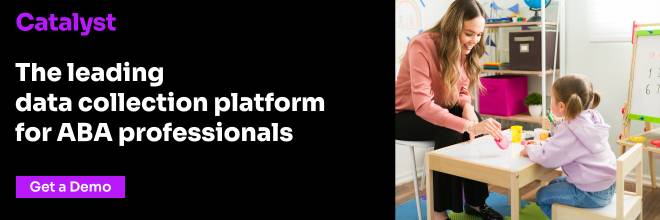What is Task Analysis in ABA?
Task analysis is a systematic approach used in Applied Behavior Analysis (ABA) therapy to break down complex skills into smaller, more manageable steps. This approach teaches skills by providing a clear roadmap and reducing the overwhelming nature of complex tasks. By breaking down skills into smaller components, therapists can effectively guide and teach their learners to acquire new abilities.
Benefits of Task Analysis in ABA Therapy
Task analysis offers several benefits in ABA therapy:
- Clear Instruction: By breaking down complex skills into smaller steps, task analysis provides clear and specific instructions for both therapists and learners. This clarity ensures that the skill is taught consistently and effectively.
- Individualized Learning: Task analysis allows for customization and adaptation based on the learners’ abilities and needs. Therapists can modify the steps or pace of instruction to match the learner’s skill level, facilitating better understanding and progress.
- Promotes Acquisition of Complex Skills: Complex skills can be overwhelming, but task analysis breaks them down into achievable steps. By mastering each step, learners gain confidence and motivation to tackle more complex tasks, leading to long-term skill acquisition.
- Data Collection and Progress Monitoring: Task analysis enables therapists to collect data on individual progress. By documenting successful completion of each step, therapists can track the learner’s development over time and make data-driven decisions to adjust instruction if needed.
Task Analysis Examples
Let’s take a look at a few examples of task analysis in ABA therapy. It’s important to note that your learner’s needs will determine the number of steps you break a task down into.
Daily Living Skills
Task analysis can be used to teach daily living skills that promote independence and well-being. This works especially well when a task has multiple intricate steps, such as tying a shoe. Using task analysis, it can be broken down as:
Step 1: Hold the shoelaces, one lace in each hand.
Step 2: Cross one lace over the other.
Step 3: Pull the lace underneath the other one to create a loop.
Step 4: Hold onto the loops and cross them over each other.
Step 5: Pull one loop through the hole to create a knot.
Step 6: Tighten the knot by pulling both loops.
Language and Communication
We don’t often think of asking and answering questions as a multi-step process, however to someone who is just learning this skill, it is. Task analysis can be used to improve communication skills by breaking down each interaction. For example, here is how answering a question can be broken down step-by-step:
Step 1: Face the person who asked the question so they know you’re answering them.
Step 2: Pause and wait for a moment to think about the question.
Step 3: Then think about a good response.
Step 4: Use words or gestures to express the answer.
Get a free demo of Catalyst’s Electronic Data Collection Software, designed by and for BCBAs.
Academic Skills
Even outside of ABA therapy, task analysis is essential for academic learning since many educational concepts are new to students. Here’s an example of how task analysis can be used when helping to enforce academic skills like reading comprehension:
Step 1: Read the text carefully, underlining unfamiliar words.
Step 2: Use a dictionary to define the unfamiliar words.
Step 3: Re-read the section and try to understand it using your new vocabulary.
Step 4: Make note of main topics, ideas, and supporting details.
Step 5: Summarize the text in your own words to make sure you understand.
Ways to Implement Task Analysis
Here are some ways to implement task analysis in ABA therapy:
- Visual Supports: Visual supports, such as visual schedules, checklists, or task analysis charts, can be effectively used to break down the steps of a particular skill and provide clear visual cues. For instance, a visual schedule with pictures or symbols can help a learner follow a task analysis for completing a morning routine. Visual supports can also assist learners in remembering the steps of a task analysis and staying on track if they get distracted or overwhelmed.
- Prompting and Fading: Begin by providing prompts and supports for each step. As learners becomes more independent and proficient, gradually reduce the level of prompting. For instance, a therapist may initially provide a physical prompt to guide a learner through each step, but as they become more proficient, the level of prompting can be gradually faded. Similarly, a therapist may start by providing a verbal prompt to remind a learner to check each paragraph for the main idea while reading a passage. After repeated successful attempts, the level of prompting can be reduced to a gesture prompt, where the therapist simply points at the paragraph. This gradual fading of prompts helps learners become more independent and proficient at completing the task.
- Practice and Repetition: Practicing and repeating the task analysis steps frequently is crucial for achieving mastery. This helps to solidify the skill in the learner’s repertoire and ensures generalization across various settings. For instance, a therapist may help a learner practice the steps of a task analysis at home, school, and in the community to aid them in generalizing the steps in different contexts.
Use our free ABA Therapy Task Analysis Template to track and monitor progress.
Catalyst’s Custom Templates
Catalyst offers custom templates designed specifically for task analysis in ABA therapy. These templates provide a user-friendly and adaptable interface for designing personalized task analysis charts. With customizable steps and prompts, therapists can easily create charts suited to individual needs and track progress effectively. In addition to task analysis templates, Catalyst offers an array of customizable templates for data collection, note-taking, and more. Schedule a demo to learn more about Catalyst’s data collection and analysis software.

